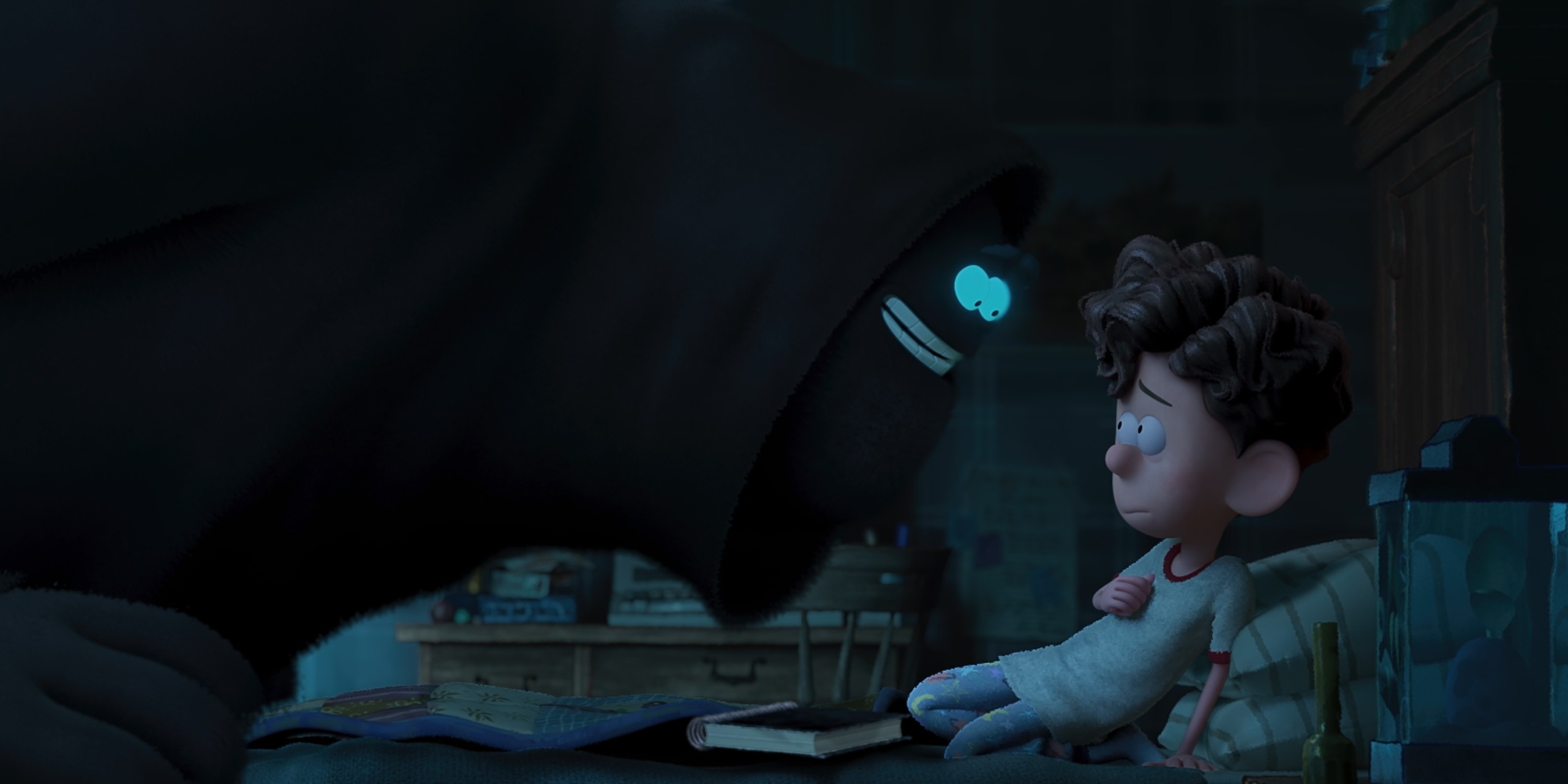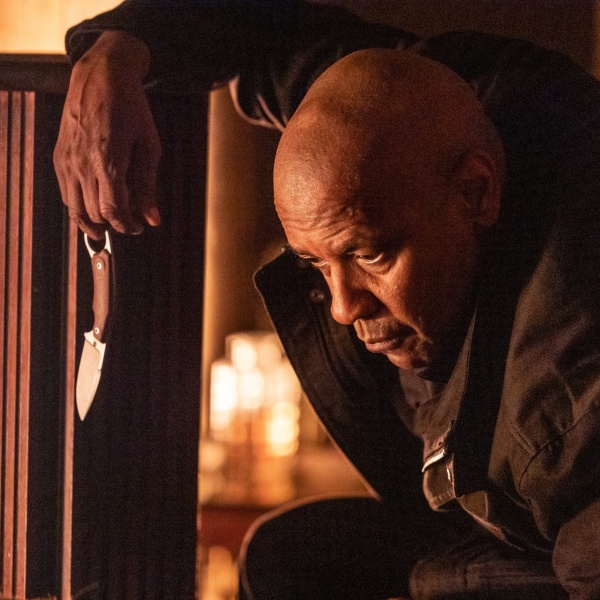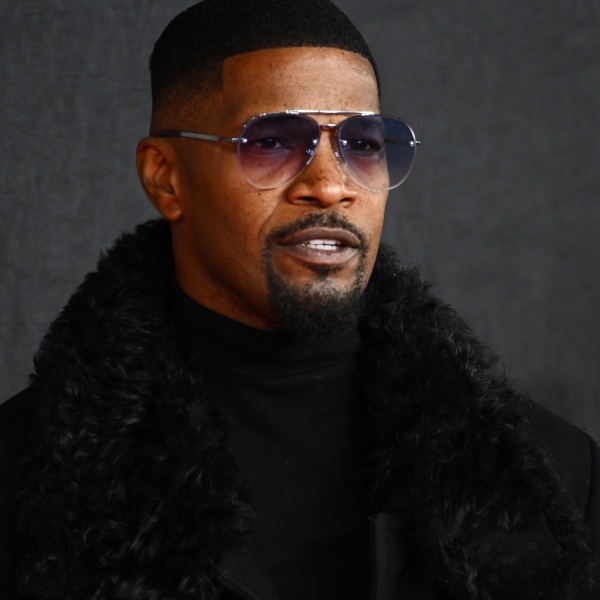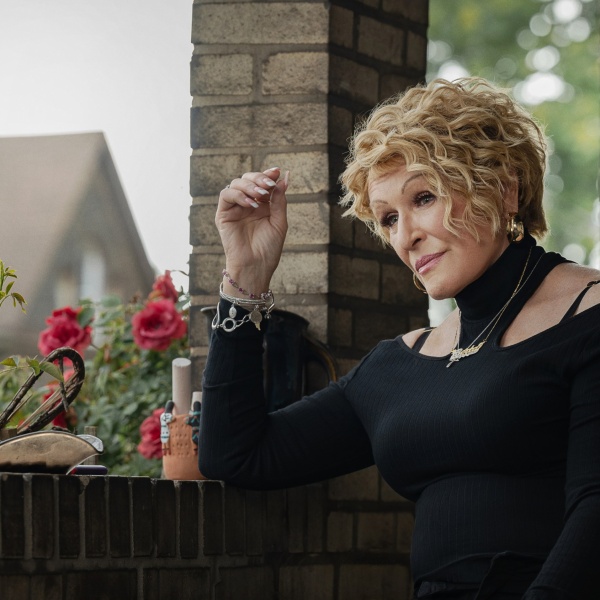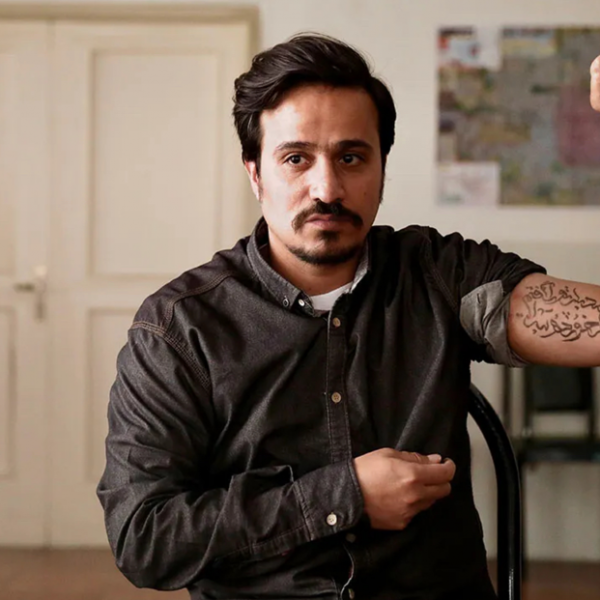As DreamWorks Animation shifts to a new production-sharing model with Sony Pictures Imageworks (“Spider-Man: Across the Spider-Verse”), we get a taste of the studio’s indie vibe at its best with “Orion and the Dark” (co-produced with Netflix and currently streaming). It’s an imaginative fantasy-adventure about confronting adolescent fears, thanks to the mind-bending script by Charlie Kaufman (“Anomalisa“).
“I think Kaufman’s whimsy and humor are brilliant for this family film space,” producer Peter McCown (“The Epic Tales of Captain Underpants,” the first DreamWorks outsourced indie) told IndieWire. “I think it’s a great match and I hope that he continues in this space.”
Kaufman spent about a year adapting Emma Yarlett’s 2014 children’s picture book about a fear-conquering adventure involving the titular adolescent and Dark, his nemesis, setting it in ’90s Philadelphia and making Orion (Jacob Tremblay) a neurotic, artistic fifth grader and Dark (Paul Walker Hauser) a hulking, insecure figure with an existential crisis. Dark invites Orion to join him on a 24-hour journey to prove he has nothing to fear from the night, accompanied by a group of oddball “Night Entities”: Dreams (Angela Bassett), Sleep (Natasia Demetriou), Insomnia (Nat Faxon), Unexplained Noises (Golda Rosheuvel), and Quiet (Aparna Nancherla).

Plus, in trademark Kaufman fashion, there is a Dark self-promotion short that lists a slew of “Dark” movie titles (narrated by doc specialist Werner Herzog), narrative- and time-bending with Orion’s future daughter, Hypatia (Mia Akemi Brown), and trippy dream environments where Orion’s drawings come to life.
McCown came onto the project with first-time feature director Sean Charmartz (“Trolls: Holiday in Harmony”) several years after Kaufman. The filmmakers’ first priority was to protect Kaufman’s script, with Charmartz drawing on the tone of “Eternal Sunshine of the Spotless Mind” and reveling in the narrative density and uniqueness of the Night Entities. But what he responded to was the basic premise “that fear is a part of life and there’s no escaping that,” Charmartz told IndieWire. “But then to accept being OK with challenges that may come and not being afraid of them.”
They married the tone with a hand-drawn, illustrated aesthetic utilizing a combination of stop-motion-influenced character design and textured backgrounds. Production designer Tim Lamb (the “Trolls” franchise) incorporated the book’s green-blue color palette along with watercolors and their tactile quality, while Philadelphia was a richly saturated suburbia infused with squiggly-lined New Yorker cartoons.

For the characters, Lamb made Orion a mini-Kaufman and had a field day with Dark and the Night Entities. Dark is a smiling, shadowy Grim Reaper; Dreams is a regal-like celestial orb; Sleep is a bossy, Muppet-like pillow; Insomnia is an annoying alarm clock/mosquito; Unexplained Noises is a thespian robot/Walkman; and Quiet is a dandelion/mouse.
“We went with this style for many reasons,” Charmartz said. “It fit the tone, but we felt this hand-drawn look, especially because it’s from [Orion’s] perspective, who draws a lot of times, would be really cool. And so we were really smart about execution and looking at a way that we could create something that popped out in terms of being unique. We kind of did the opposite of ‘Spider-Verse’ or ‘The Mitchells vs. the Machines,’ where our environments are linework and the characters aren’t, with a more sculpted, stop-motion look.
The director said the 2D style also fits with the film’s earnestness and was a throwback to his favorite 2D films, including Disney’s “Robin Hood” and “The Sword and the Stone,” and Don Bluth’s “The Secret of NIMH,” “An American Tail,” and “The Land Before Time.”
“We wanted to have a more traditional illustrative look, saving saturation for when it matters,” VFX supervisor M. Scott McKee told IndieWire. “For our film, it was how we push to achieve the character skin and hair design, line work, broken edges to help give us the tactile, traditional feel. The Mikros team in India did a great job in helping us achieve our stylistic goals.”

For Dark’s design, they leaned into photography and compositing and literally used ink drops on paper for his transitions. Then they stylized that and incorporated it with projections of captured ink, 3D volumes, and compositing techniques that simulated those ideas with the matte painting team. “The biggest challenge with the real ink drops is that it evolves over five to 10 seconds and every drop is different,” McKee added. “We had to come up with techniques to capture that in one to two seconds and could be art-directed yet still feel like ink. For the ‘Entities,’ we incorporated all of the cool trails and volumes, mixing in representations of their characters.”
In addition, the animation team integrated 2D not only for making Orion’s drawings come to life but also for a brief recycling commercial that’s a throwback to “The Brave Little Toaster.” “Sean Charmatz wanted our 2D sequences to have all the charm and simplicity of a real kid’s drawings and really tell the story of Orion’s fears,” art director Christine Bian told IndieWire. “It started for us in the art department with the great — and hilarious — storyboards from our stellar story department.
“The style of the final 2D look,” she continued, “was developed by one of our very talented artists, Emily Tetri, who drew each frame of the animation three times to give it the distinctive ‘boiling’ look it has in the film. When the drawings fly off the page at the end of the film, we were very lucky to have veteran animator Julien Bocabeille help us do some traditional 2D animation that was then composited into the 3D scene.”
Director Charmatz praised Mikros for executing the aesthetic as well as they did given the limitations of time and budget. “There wasn’t a lot of room to discover and explore, and that’s what a lot of that money buys us,” he said. “I commend everyone for sticking to our guns and really pushing for the style, because [Mikros] didn’t know how to do it yet. Yeah, it came at the 11th hour, searching for it as much as we were, translating it from Tim Lamb. We were bringing in everyone we could think of to try to crack the nut and make it producible.”
